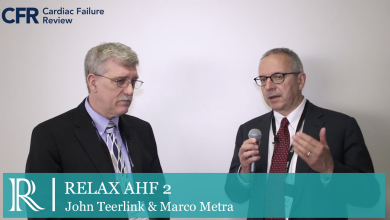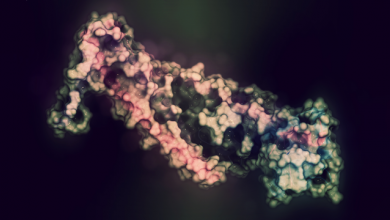Search results
Author(s):
Maria Rosa Costanzo
Added:
3 years ago
Approximately 90% of the more than 1 million yearly heart failure hospitalisations in the US and Europe are a result of symptoms and signs of fluid overload and are associated with readmission rates of 24% and 50% at 30 days and 6 months, respectively.1,2 Recurrent heart failure-related hospitalisations have uniformly been associated with worse outcomes, independent of age and renal function.3
…
View more
Author(s):
John R Teerlink
,
Marco Metra
Added:
6 years ago
RELAX AHF 2 - Efficacy, Safety and Tolerability of Serelaxin when Added to Standard Therapy in AHF.
Interview with Prof. John Teerlink & Prof. Marco Metra at HFA 2017.
View more
Author(s):
Federica Jiritano
,
Valeria Lo Coco
,
Matteo Matteucci
,
et al
Added:
3 years ago
Cardiogenic shock (CS) is a circulatory failure as a consequence of left, right or biventricular dysfunction.1 It leads to critical end-organ hypoperfusion due to primary cardiac dysfunction.1 Therefore, CS is not only a cardiac disease but also a multiorgan dysfunction syndrome involving the entire circulatory system, often complicated by a systemic inflammatory response syndrome.2 The goals of…
View more
Author(s):
A Mark Richards
Added:
3 years ago
Ideally biomarkers provide the clinician with assistance in one or more of: (i) diagnosis, (ii) prognosis, (iii) choice and titration of therapy, (iv) monitoring progression of disease and (v) assessing response to treatment. The best-established biomarkers in acute decompensated heart failure (ADHF) are the B-type natriuretic peptides (brain natriuretic peptide [BNP] and N-terminal of the…
View more
Author(s):
Mohammad S Alzahri
,
Anita Rohra
,
W Frank Peacock
Added:
3 years ago
Acute heart failure (AHF) presents symptoms primarily the result of pulmonary congestion due to elevated left ventricular (LV) filling pressures with or without reduced ejection fraction (EF). Common precipitating pathology includes coronary artery disease (CAD), hypertension and valvular heart diseases, in addition to other noncardiac conditions, such as diabetes, anaemia and kidney dysfunction…
View more
Author(s):
Rafael de la Espriella
,
Gonzalo Núñez-Marín
,
Pau Codina
,
et al
Added:
5 months ago
Author(s):
Nicholas Wettersten
,
Alan S Maisel
Added:
3 years ago
Cardiac troponin (cTn) is the core biomarker for the diagnosis of a myocardial infarct (MI).1 Indeed, as stated in Table 1, it meets all the definitions of a biomarker for acute coronary syndrome (ACS), as suggested by Maisel.2 In the setting of ACS, in addition to its diagnostic use, it is prognostic, clinically actionable and can be monitored during therapy as a surrogate of improvement. In…
View more
Author(s):
Marat Fudim
Added:
5 years ago
Dr Marat Fudim (Durham, US) discusses how splanchnic nerve block can be used to treat acute heart failure.
Filmed by Radcliffe Cardiology on site at HFA 2018 in Vienna, AT.
View more
Author(s):
Jozine ter Maaten
Added:
7 months ago
ESC 2023 — Dr Jozine Ter Maaten (University Medical Centre Groningen, NL) joins us to outline the findings from the PUSH-AHF Study (NCT04606927).
PUSH-AHF (University Medical Center Groningen) aimed to assess the effect of natriuresis-guided therapy in patients with acute heart failure to improve diagnostic response, decongestion and clinical outcomes. 310 patients with a primary diagnosis of…
View more
Author(s):
Jillian Riley
Added:
3 years ago
The specialised role of the heart failure nurse rose to prominence during the 1990s. Studies of heart failure disease management reported a reduction in the risk of hospital readmission in services with structured follow up that focused on the optimisation of therapy, out-patient follow up, education for self-care and the coordination of care.1 Nurses had already established their role in the…
View more
















